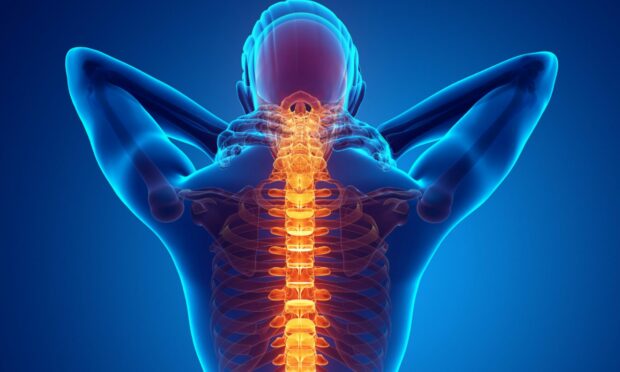Experiencing pain can be a debilitating fact of life for many.
But why do some people suffer from neuropathic, or nerve, pain and some don’t? What causes it?
And how can you tell if it is neuropathic pain, rather than something else, you are suffering with?
Researchers from Dundee University recently discovered why some of us develop neuropathic pain and others don’t.
So we’re answering all your questions about nerve pain.
What does neuropathic pain feel like?
Those who have neuropathic pain say it impacts physical and mental health.
Many patients say pain relief with current drug treatments doesn’t relieve it.
Symptoms may vary from person to person but common ones include:
- Shooting, burning, or stabbing pain.
- Tingling and numbness, or a ‘pins and needles’ feeling.
- Spontaneous pain, or pain that occurs without a trigger.
What has the Dundee research found?
The researchers, led by Professor Blair Smith from Dundee’s School of Medicine, analysed studies which identify genes involved in human diseases.
They discovered a genetic link to neuropathic pain.
In fact, they’ve noticed there are two genetic variants which could mean some people are more likely to develop this type of pain, also known as nerve pain.
The two variants are active in the spinal cord and brain tissues.
Researchers say one is rare but, if present, make a person one and a half times more likely to develop neuropathic pain.
This news could help explain why some individuals with underlying health conditions develop it, while others from these high-risk groups don’t.
How is it currently treated?
It may include treatment for any underlying cause of the pain.
Unlike most other types of pain, neuropathic pain does not usually get better with common painkillers, such as paracetamol and ibuprofen, and other medicines are often used.

The main medicines recommended for neuropathic pain include:
- amitriptyline.
- duloxetine.
- pregabalin and gabapentin.
Tramadol is also often prescribed when pain doesn’t respond to other treatments.
NHS advice also includes a substance called capsaicin cream, if pain is confined to a particular area.
Capsaicin is the substance that makes chilli peppers hot and is thought to work in neuropathic pain by stopping the nerves sending pain messages to the brain.
Managing symptoms
In addition to treating pain, you may also require treatment to help manage other symptoms.
For example, if you have muscle weakness, you may need physiotherapy to learn exercises to improve your muscle strength.
Alternative therapies, such as acupuncture and herbal medicine maybe helpful but always consult your GP in case it interferes with ongoing treatment.
Will the study lead to new treatments?
The findings by the Dundee University researchers now need to be validated in other studies.
It’s thought the development of drugs to treat neuropathic pain remain some way off.
But the findings give a better understanding of genetic predisposition to this condition.
So this may inform development of new treatment strategies and new drugs in the the future.
What are the common causes of this pain?
Neuropathic pain happens because of a lesion or disease affecting the nervous system. Around seven to 10% of the general population experience it.
Underlying conditions which are common causes of neuropathic pain include:
- diabetes.
- surgery.
- trauma.
- shingles.
- HIV.
- nerve compression and entrapment.
But not every patient with an underlying condition develops it.
- Do you live with chronic pain? Have you found any solutions that help your condition? We’d love to hear your story. Contact us: healthandwellbeing@thecourier.co.uk













